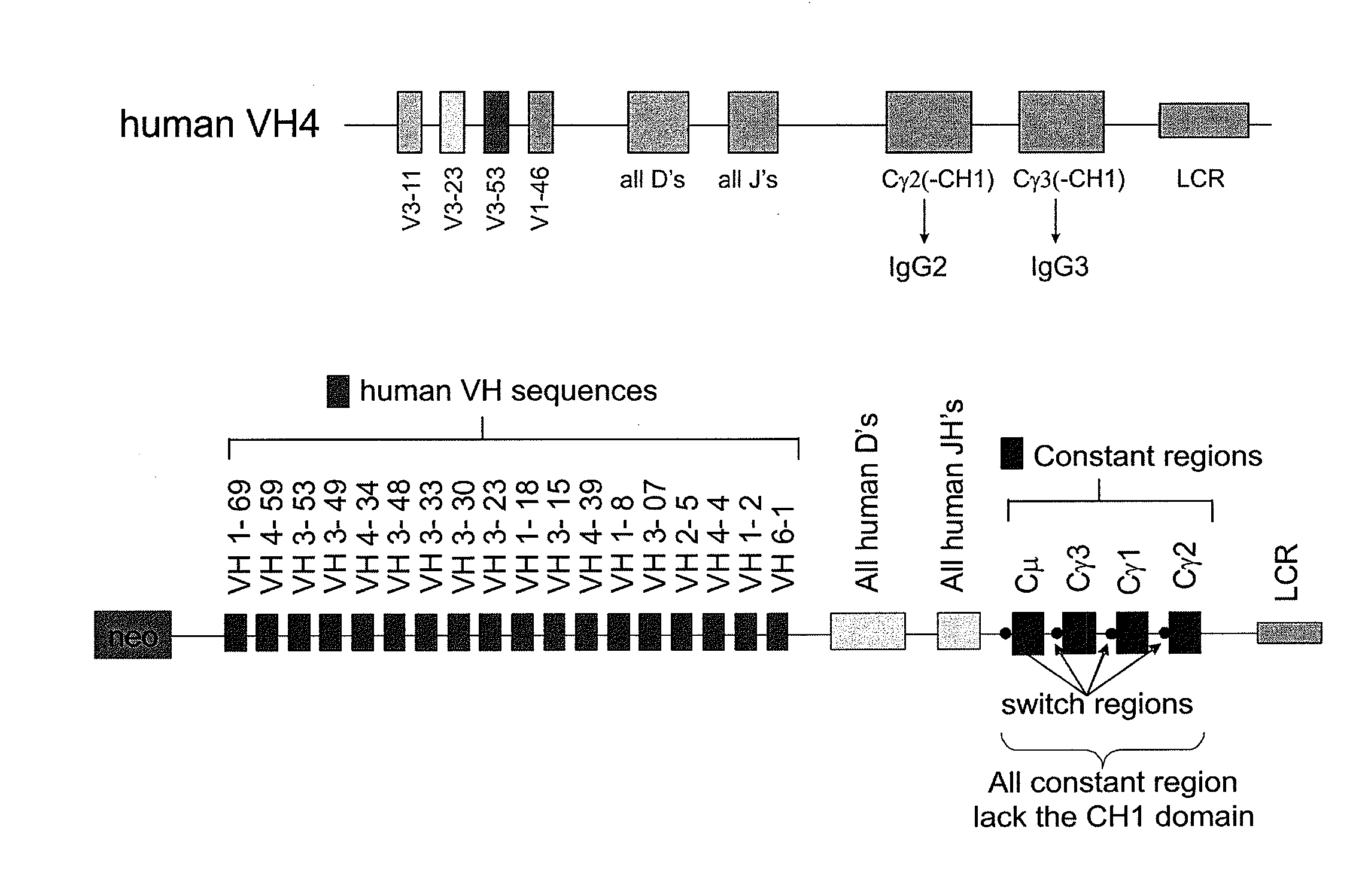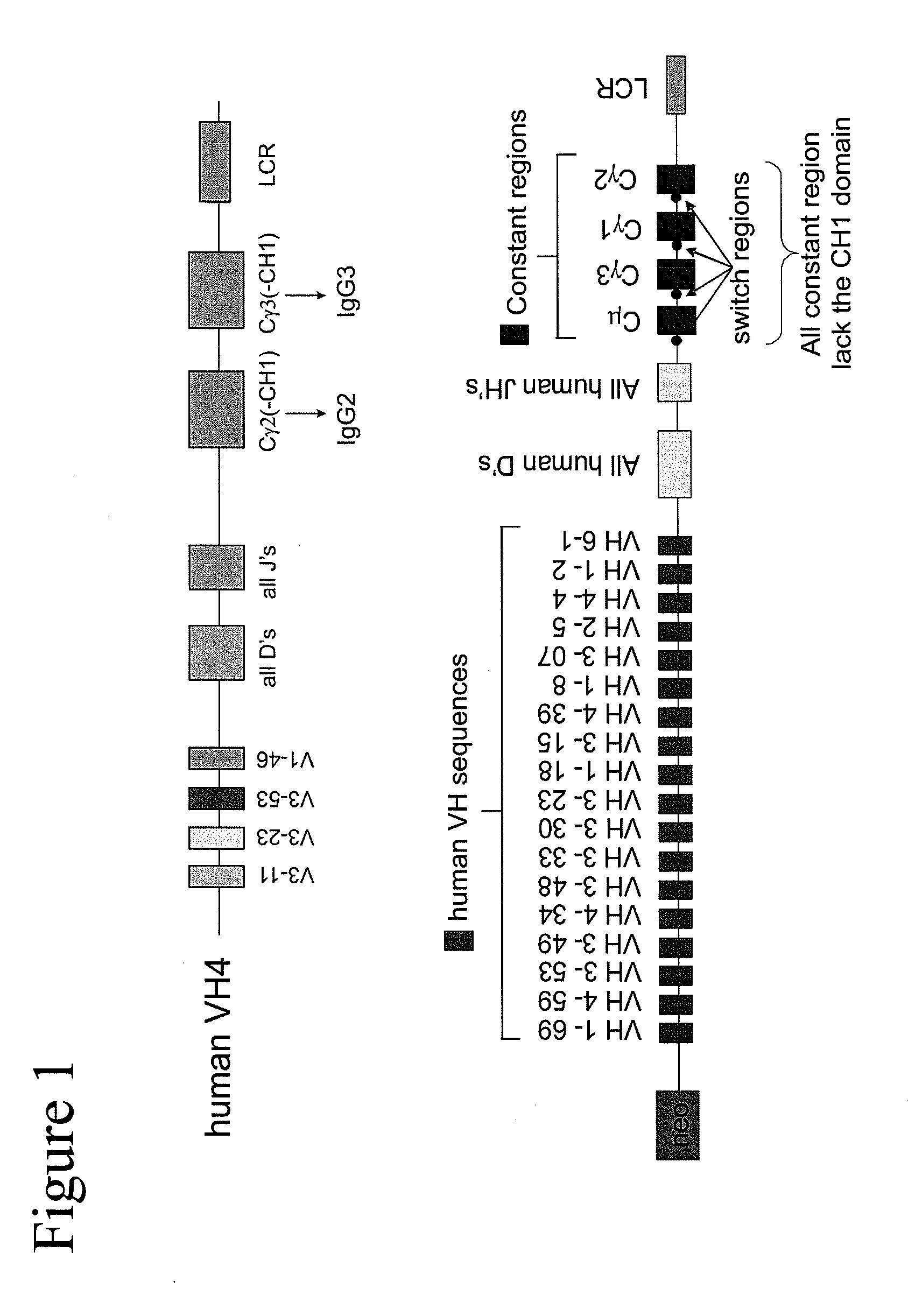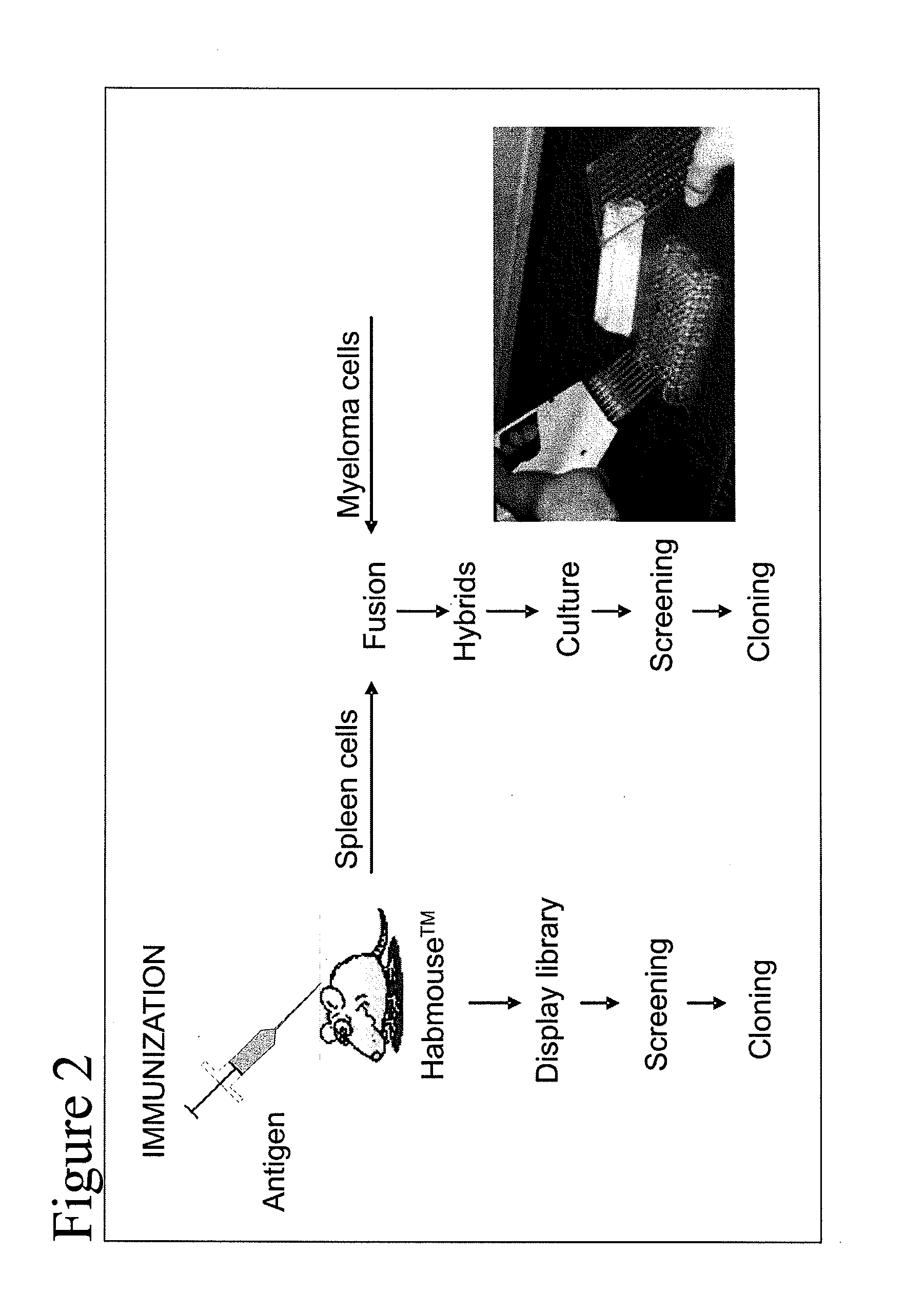Soluble "heavy-chain only" antibodies
a technology of antibodies and heavy chains, applied in the field of soluble " heavy chain only " antibodies, can solve the problems of inability to meet pharmaceutical applications, inability to withstand in vitro, and inability to achieve endogenous antibodies, and achieve the effect of reducing the capacity to produce endogenous antibodies
- Summary
- Abstract
- Description
- Claims
- Application Information
AI Technical Summary
Benefits of technology
Problems solved by technology
Method used
Image
Examples
example 2
Generation of Anti Human CR1 Antibodies
[0230]Example 2 is very similar to Example 1 except that the immunisation is carried out with CR1 as the antigen, a protein that is normally expressed on the surface of human red blood cells. The immunisation was also carried out by injection of murine red blood cells that express human CR1 on their cell surface. The result of the different immunisations is very similar Immunisation is carried out in transgenic mice containing a completely human heavy chain antibody locus as described in WO 2006 / 008548. These mice carry 4 human VH segments, all of the human heavy chain D regions all of the JH regions and the human Cγ2 and Cγ3 regions (FIG. 1).
[0231]The CH1 regions have been deleted from the human Cγ constant regions to allow the production of human heavy chain-only antibodies as described (Janssens et al (2006) PNAS, 103, 15130-15135). The mice are immunised using standard protocols and the antibodies are isolated as schematically shown in FIG....
example 3
Expression of VH Domains and Heavy Chain-Only Antibodies, Affinity and Solubility
[0233]The VH domains of Examples 1 and 2 can be expressed in a bacterial expression system to obtain large quantities of purified VH domains. For example, the VH domain can be expressed as hybrid protein in bacteria using the SUMO hybrid expression system (InVitrogen). When purified, these run as a single fragment on denaturing gel electrophoresis gels (FIG. 7). When run on a Smart Sephadex chromatography system under non-denaturing condition, these VH domains run predominantly as a single main peak of the correct molecular weight (FIG. 7), with little evidence of soluble aggregates.
[0234]Heavy chain-only antibody derived from hybridoma supernatants also run predominantly as a single main peak, with evidence of a small percentage of antibody dimer at the leading edge of the peak.
[0235]The single peak of the VH domains suggests that they are soluble monomers, which was confirmed by running scatter plots ...
example 4
Mass Sequencing to Determine the Mutation Patterns
[0238]From an inspection of all the sequences collected from the antibodies binding Luk-sPV, CR1 and other antigens, it became apparent that the VDJ recombination and maturation (hypermutation) of soluble human VH domains derived from HCAb transgenes expressed in murine B-cells was very different from that observed in camel and llama VHH domains, or human VH domains derived from normal tetrameric heavy and light chain antibodies. A massive parallel sequencing (Roche 454 sequencing) was therefore carried out to follow the process from recombination to hypermutation. This was used to verify that the process is indeed different, and to understand which parameters and part(s) of the antibody are important for the generation of a high affinity, soluble human heavy chain-only antibody following the initial choice of a particular VDJ recombination. The results provide an overview of how the process takes place (FIG. 11).
[0239]This analysis ...
PUM
| Property | Measurement | Unit |
|---|---|---|
| Molar density | aaaaa | aaaaa |
| Solubility (mass) | aaaaa | aaaaa |
| Surface | aaaaa | aaaaa |
Abstract
Description
Claims
Application Information
 Login to View More
Login to View More - R&D
- Intellectual Property
- Life Sciences
- Materials
- Tech Scout
- Unparalleled Data Quality
- Higher Quality Content
- 60% Fewer Hallucinations
Browse by: Latest US Patents, China's latest patents, Technical Efficacy Thesaurus, Application Domain, Technology Topic, Popular Technical Reports.
© 2025 PatSnap. All rights reserved.Legal|Privacy policy|Modern Slavery Act Transparency Statement|Sitemap|About US| Contact US: help@patsnap.com



